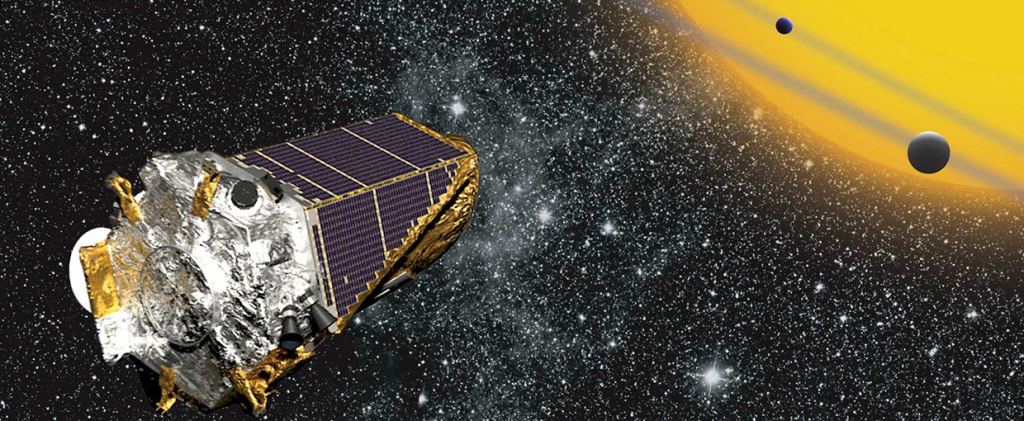We’re about to learn a lot more about exoplanets. The ESA has just approved the construction of its Ariel mission, which will give us our first large survey of exoplanet atmospheres. The space telescope will help us answer fundamental questions about how planets form and evolve.
The JWST has proven the value of infrared telescopes that can examine exoplanet atmospheres. It made headlines when it detected carbon dioxide and active chemistry in one exoplanet’s atmosphere. Now, the ESA has approved the construction of its Ariel space telescope, which is entirely focused on exoplanet atmospheres.
Characterizing exoplanet atmospheres is only one of the JWST’s science goals. But Ariel will focus on them entirely. While it’ll be much smaller than the JWST, it’ll devote much more time to exoplanet atmospheres.
Using the transit method, Ariel (Atmospheric Remote-sensing Infrared Exoplanet Large-survey) will observe at least 1,000 known exoplanets and their atmospheres. Back in May, Ariel’s scientific payload received approval. The payload is the cryogenic infrared telescope that hosts two instruments: the Ariel medium-resolution InfraRed Spectrometer (AIRS) and the Fine Guidance System (FGS).
The payload approval was just part of a rigorous 19-month-long design phase . With the preliminary design in hand, the design of the spacecraft has been refined enough that engineering and qualification models of the space telescope can now be built. That task falls to Airbus Defence and Space Toulouse, Ariel’s prime contractor.
“We are delighted that we have achieved a significant milestone in spacecraft design, marking a solid foundation to proceed with detailed development across all subsystems and with the manufacturing phase,” says Jean-Christophe Salvignol, Ariel’s project manager. “The prospect of witnessing the hardware is truly exciting! I’m especially enthusiastic about the manufacturing and assembly of the structural model, as its structure will closely resemble the final product set to take flight. ” After Airbus builds the engineering and qualification models, they’ll be subjected to extreme testing to see how they’ll stand up to launch conditions.
These tests will also verify that the satellite’s subsystems work together properly and that everything is compatible with the launch vehicle and ground systems. “We will soon be able to see and test the Ariel structural model, which is always a very special moment for any scientist working on a space mission. ” Alongside the design and testing, scientists are compiling a list of potential targets for Ariel.
The goal is to build a survey of homogeneous results across a wide exoplanet population. The results will feature wide wavelength coverage in both infrared and visible light and a high signal-to-noise ratio. Ariel will work with three tiers of targets.
Tier 1 will have about 1,000 targets. These initial 1,000 will create a large sample size containing basic characterization of the atmospheres (presence of clouds, colour-colour diagrams etc. ) of the planets.
Tier 2 will comprise about half of the targets from Tier 1. Tier 2 will be longer duration observations of each target that will give a more detailed view of each exoplanet’s atmosphere. Lastly comes Tier 3.
Tier 3 will study the best targets for atmospheric characterization multiple times in search of temporal variations in chemistry or cloud coverage. Depending on how everything goes, there could even be a Tier 4, which will refine things even further. In 2022, researchers published a paper presenting a Mission Reference Sample for Ariel.
It’s derived from currently-known exoplanets and from the Tess Planet Candidates. The image below shows how the targets are spread across the sky. The Mission Reference Sample also shows the sizes of the planets and their temperatures.
Among the targets are the TRAPPIST-1 planets, which are well-known. Other targets include super-Earths like TOI-776b and Neptune-like planets like TOI-270c. The target list will become clearer over time, just like Ariel’s design.
Airbus will build and test the engineering and qualification models next. After that comes the Critical Design Review. At that point, the actual flight model that will travel to the Sun-Earth L2 point will be built.
“It is fantastic to see the important spacecraft design review successful. Having passed this milestone, we can continue the implementation of this exciting mission that will revolutionize our knowledge of how planets around other stars form and evolve and what their atmospheres are made of,” adds Theresa Lueftinger, Ariel’s project scientist. “Particularly exciting is the ‘coming into existence’ of the hardware: we will soon be able to see and test the Ariel structural model, which is always a very special moment for any scientist working on a space mission.
” Every space mission is complex, and schedules can change. As it stands, Ariel is scheduled to launch in 2029. Its mission duration is planned for four years, but often those estimates are conservative minimums.
However long it lasts, its contribution to science will be both timely and enormous. .
From: universetoday
URL: https://www.universetoday.com/164655/esas-ariel-mission-is-approved-to-begin-construction/



